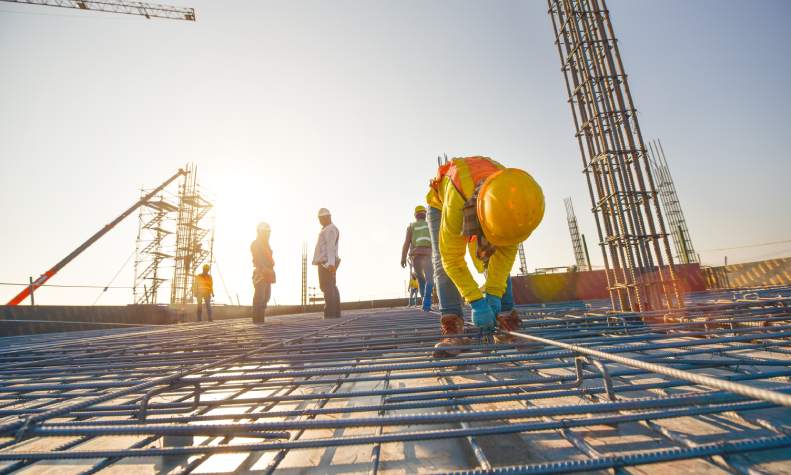
Smart Concrete Paves the way to Safer and Cheaper Infrastructure
Built environments across the world are comprised largely of concrete. We tend not to give it much thought, but more than 80% of all infrastructure globally is made at least partly from concrete – whether in bridges, tunnels, parking garages, ports, or skyscrapers, concrete is the building material of our age.
There is, however, an inherent drawback to the use of concrete – as we currently know it, at least – in these vital and ubiquitous structures. A concrete structure is only stable so long as the steel core around which it is built is in good condition – once the steel reinforcement starts to weaken and corrode, so does the edifice as a whole. As things stand now, those responsible for such structures can only speculate as to the condition of these steel reinforcements, because they cannot see them – the concrete itself is in the way. This blindness to internal wear leaves them guessing over when action must be taken; they only know for sure when they start to see damage on the outside, by which time problems may be too far advanced to resolve fully, or punitively expensive to address.
The implications for safety, and the financial risks involved, are substantial: in Germany alone -where InfrastructureTek’s partner is located-, up to 90 billion Euros of avoidable damage is sustained to public bridges this year from this inability to monitor the status of inner frames.
The only way to see past the concrete is to have ‘eyes’ in the concrete itself. Thankfully, technology now exists to provide just that. Innovators have recently developed connected sensors which, placed inside concrete next to steel reinforcement, can assess their condition and transmit readings to those responsible in real time. Corrosion, humidity, vibration, cracking, changes in pressure – all the symptoms of internal deterioration in concrete structures – can now be monitored cheaply and accurately, and with sufficient ease that almost no training of personnel is necessary. By using Mobile IoT’s constituent technologies ‐such as NB‐IoT‐ to achieve this, sensors can be placed in the very deepest and hardest-to-reach locations and make such low power demands that they need not be replaced for decades, if at all.
Benedikt Seuss, Managing Director of our company’s business partner, explains that this kind of technology “helps us to roll out our sensors much more easily, to reduce running costs, increases the power lifetime, and, with deeper penetration into buildings, it helps us to have coverage where we need it.”
InfrastructureTek’s wireless sensors use RFID, meaning they require no batteries – once installed, they can be relied upon for the lifetime of most concrete structures.

The advent of ‘smart concrete’ means that what was a rudimentary building material can now become an invaluable addition to the Internet of Things. The advantages – to human welfare, sustainability, and financial cost – are considerable. Structures whose internal condition can be accurately monitored, and not merely estimated, can be more effectively maintained; their lifespan can therefore be maximized, with repairs made at the most cost‐effective point of intervention, and potentially disastrous collapses can be avoided entirely.
Financial savings come not only in the cost of repairs, but in the overall maintenance costs; placing these inexpensive sensors within a structure for its entire lifespan eliminates the need for regular manned inspections, and with it the cost both of the associated staffing and invasive procedures involved. Civic authorities can thereby redirect funds to public services, and the private sector can redirect investment where it is most needed. Nor need there be significant initial outlay to upgrade to smart concrete – as a sully retrofittable solution, it can be installed during routine structural replenishment of concrete blocking.
Enabling infrastructure to communicate its condition to us directly is a vital advance in the development of smart cities, and connected environments more broadly. The avoidance of infrastructural collapse is of incalculable value in the protection of human lives; efficiency savings in everything from waterworks to sports centers could determine viability in a vast array of contexts.
We will follow the rollout of this ingenious contribution to the Internet of Things with great interest.